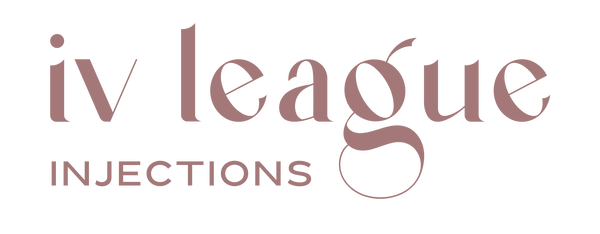POLYDIOXANONE (PDO) THREADLIFTS
PDO threadlifts, also known as thread facelifts, are a non-surgical minimally invasive procedure that uses threads made of polydioxanone (PDO) to lift and tighten sagging skin. The threads are inserted into the skin using a needle, and then pulled tight to lift and smooth out wrinkles and saggy skin. The threads also stimulate collagen production, which helps to improve skin elasticity and firmness over time. The procedure is typically performed on the face, neck, and other areas of the body where sagging skin is a concern. The procedure is minimally invasive, and recovery time is generally short, with most people returning to their normal activities within a few days.
Benefits of PDO Threads
-
They are made of a synthetic material called polydioxanone, which is a type of suture material commonly used in surgical procedures for decades. One of the advantages of PDO threads is that they do not cause vascular occlusion, or blockage of blood vessels.
- This is because the threads are very thin and are inserted into the skin using a small needle, which does not cause damage to the blood vessels. Additionally, the threads are made of a material that is absorbed by the body over time, so they do not leave any foreign material in the skin that could cause blockages.
- Immediate results: Threadlifts can provide immediate lifting and tightening effects, with little to no downtime.
- Minimally invasive: Compared to surgical procedures such as facelifts, threadlifts are minimally invasive and require only small incisions, reducing the risk of complications and scarring.
- Natural-looking results: Threadlifts can provide natural-looking results, as they lift and tighten the skin gradually over time.
- Stimulate collagen production: The threads used in threadlifts stimulate the production of collagen, a protein that gives the skin its elasticity and firmness. This can result in long-lasting improvements in skin texture and quality.
It's important to note that PDO threads should be used by trained and licensed practitioner, as the procedure carries risks such as infection, nerve damage or even injury to the blood vessels if not done properly.
Are you a Candidate?
The candidate process for PDO threadlifts typically includes a consultation with a qualified healthcare professional such as a plastic surgeon, dermatologist, or aesthetician. During this consultation, the healthcare professional will evaluate the patient's skin and discuss their aesthetic goals and concerns. They will also review the patient's medical history and any medications or supplements they are currently taking to ensure that the procedure is safe for them. Some of the general contraindications for PDO threadlifts are: active infection, skin diseases, pregnancy, bleeding disorder, history of keloid scarring, and poor skin elasticity.
Thread candidates are those whose main concern is sagging skin which is when the skin loses elasticity and begins to droop or hang loosely from the underlying tissue causing folds or jowls, loss of definition or contour in the face. Sagging skin can be caused by a variety of factors such as aging, weight loss, genetics, or lifestyle factors such as smoking and poor nutrition.
It's important to note that not everyone is a good candidate for PDO threadlifts. People with severe skin laxity or with unrealistic expectations about the results may not be good candidates for this procedure.
- Threads are best done in combination with botox, a initial appointment 2-4 weeks is recommended. This allows the health care provider to assess if botox is needed to relax the treated area to decrease any potential interference from muscle contractibility.
FREQUENTLY ASKED QUESTIONS ABOUT PDO THREADS
Which areas can I treat?
Areas available of treatment are the jawline and the midface.
How long does it take?
The PDO Threadlift treatment typically takes about 60-90 minutes to complete, depending on the area being treated and the amount of threads being used. During the treatment, our experienced practitioner will carefully insert the threads under the skin to lift and tighten the targeted area.
Is it painful?
Most patients report that PDO Threadlift treatments are mildly discomfortable or mild pain may be experienced during the insertion process. We use a injectable anesthetic during insertion, ensuring that you are as comfortable as possible throughout the procedure and provide compression bandages and recommend a scheduled a over the counter regime of tylenol or advil post procedure.
What is the recovery time?
PDO Threadlift treatments have minimal downtime and recovery time. You may experience some redness, swelling, or bruising at the insertion site for a few days after the treatment. We recommend that you refrain from exercise, and large movements of the facial area for 1-2 weeks to allow the collagenesis experience fully set. However, you can return to your normal activities immediately after the treatment,
What are the side effects?
PDO Threadlift treatments are considered safe and effective, with minimal side effects. Some patients may experience temporary side effects such as redness, swelling, bruising, or tenderness at the insertion site. Some people are able to feel the thread from overtop of the skin. These side effects typically subside within a few days to a week after the treatment.
At our clinic, we prioritize patient safety and satisfaction, and we ensure that our PDO Threadlift treatments are administered by experienced and licensed practitioners. We are committed to helping you achieve your aesthetic goals with the highest level of care and attention to detail.
PDO THREADS RESULTS
-

Jawline Threadlift
-

Face Threadlift
-

Facial Threadlift
-

Facial Threadlift
-

Facial Threadlift
-

Tip Reduction Threadlift
-

Jawline Threadlift







